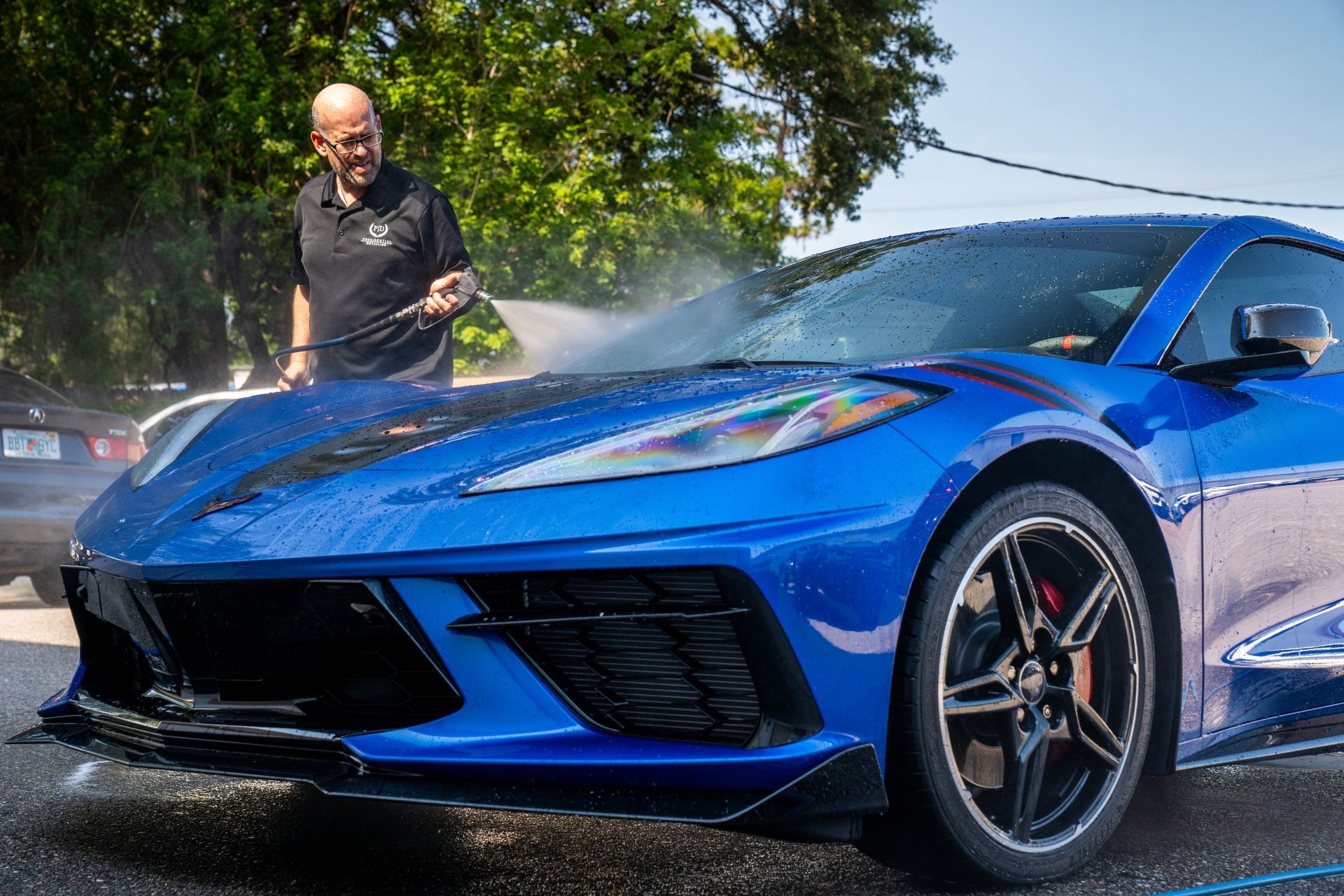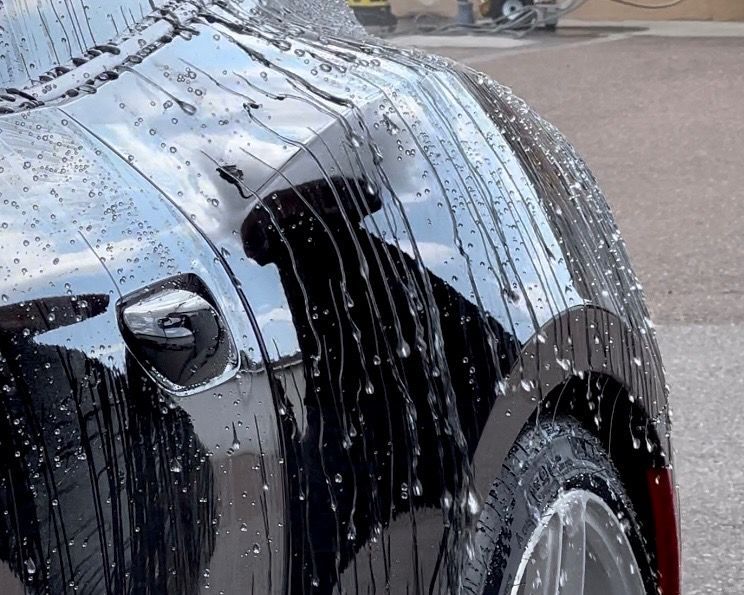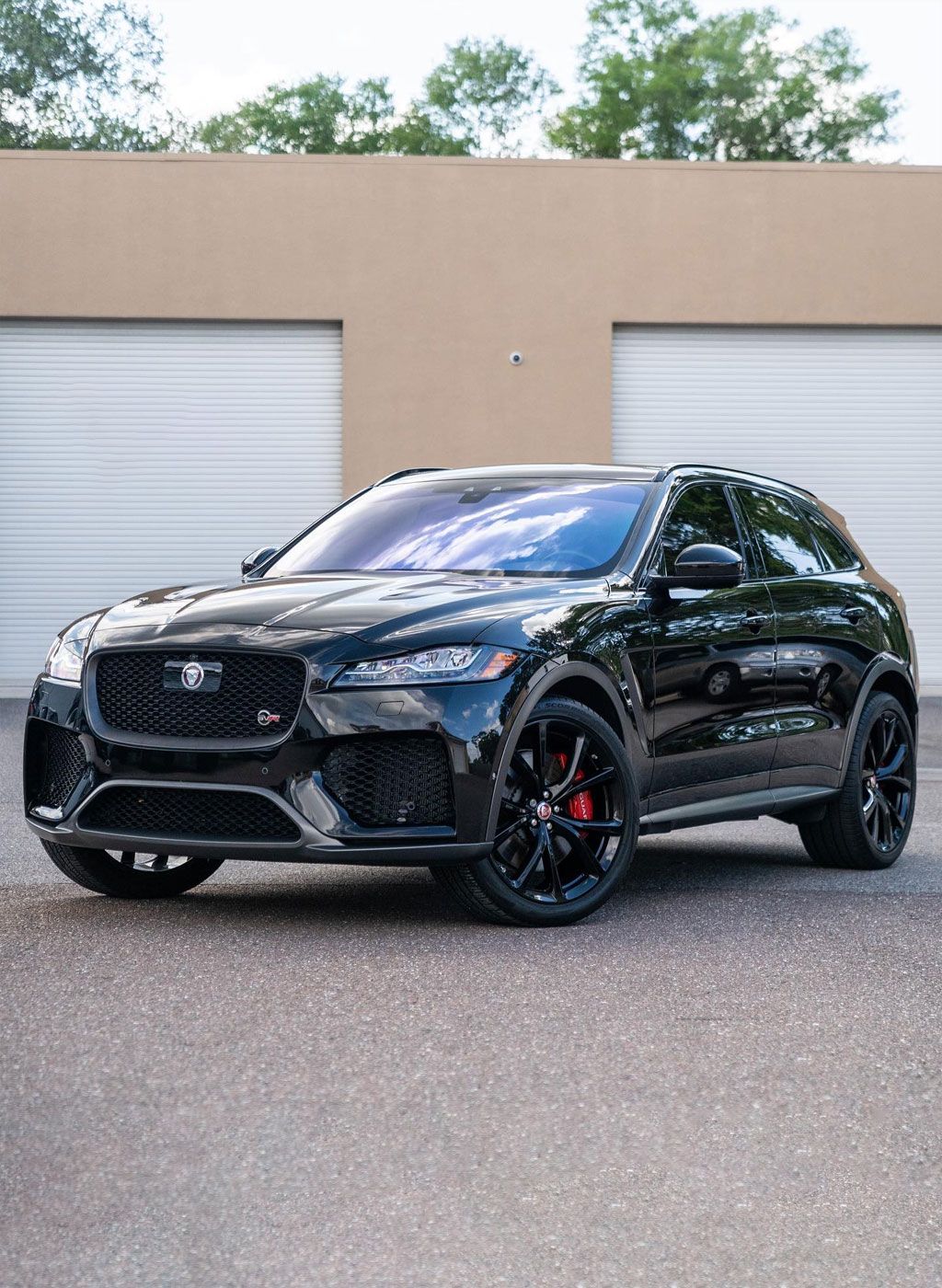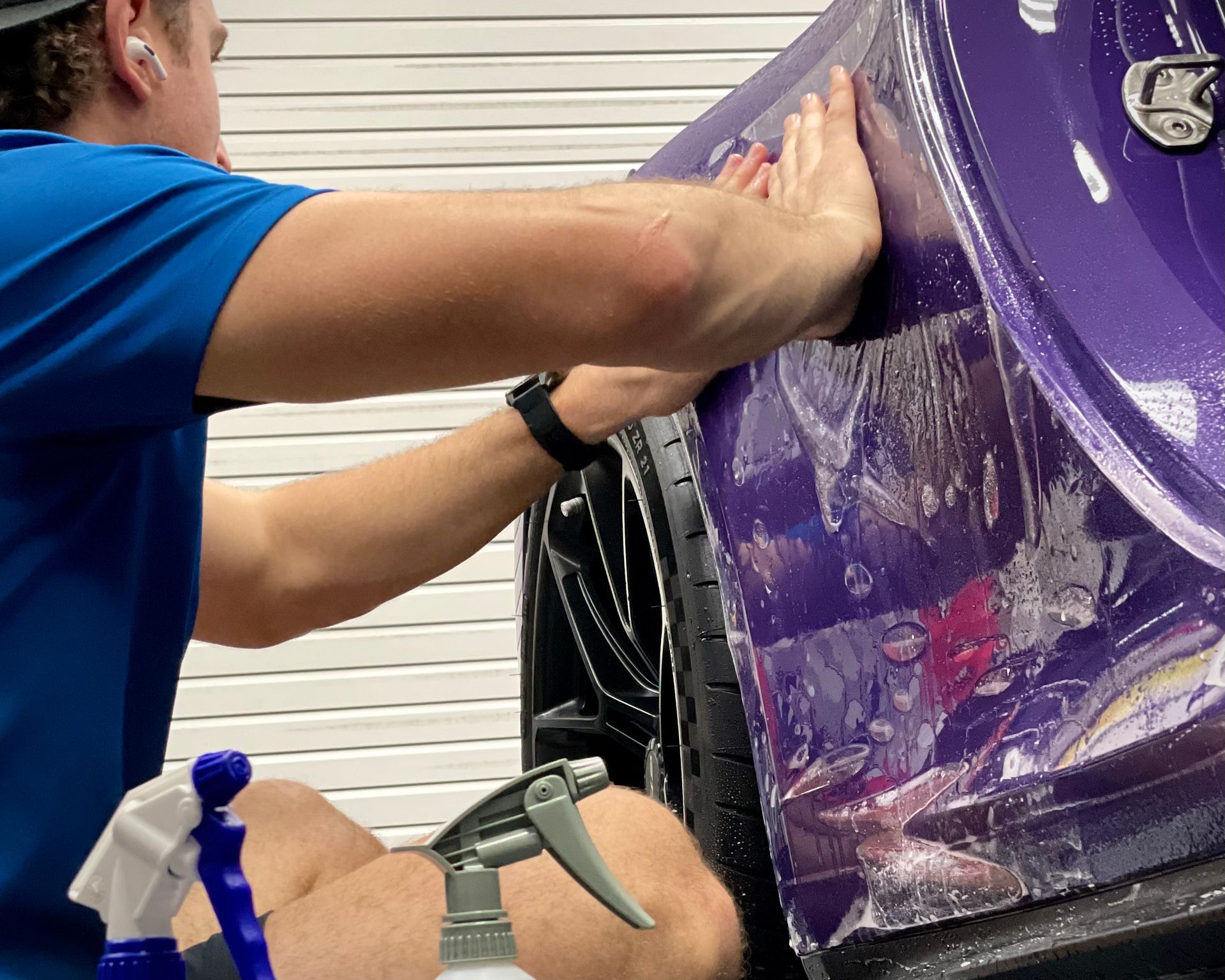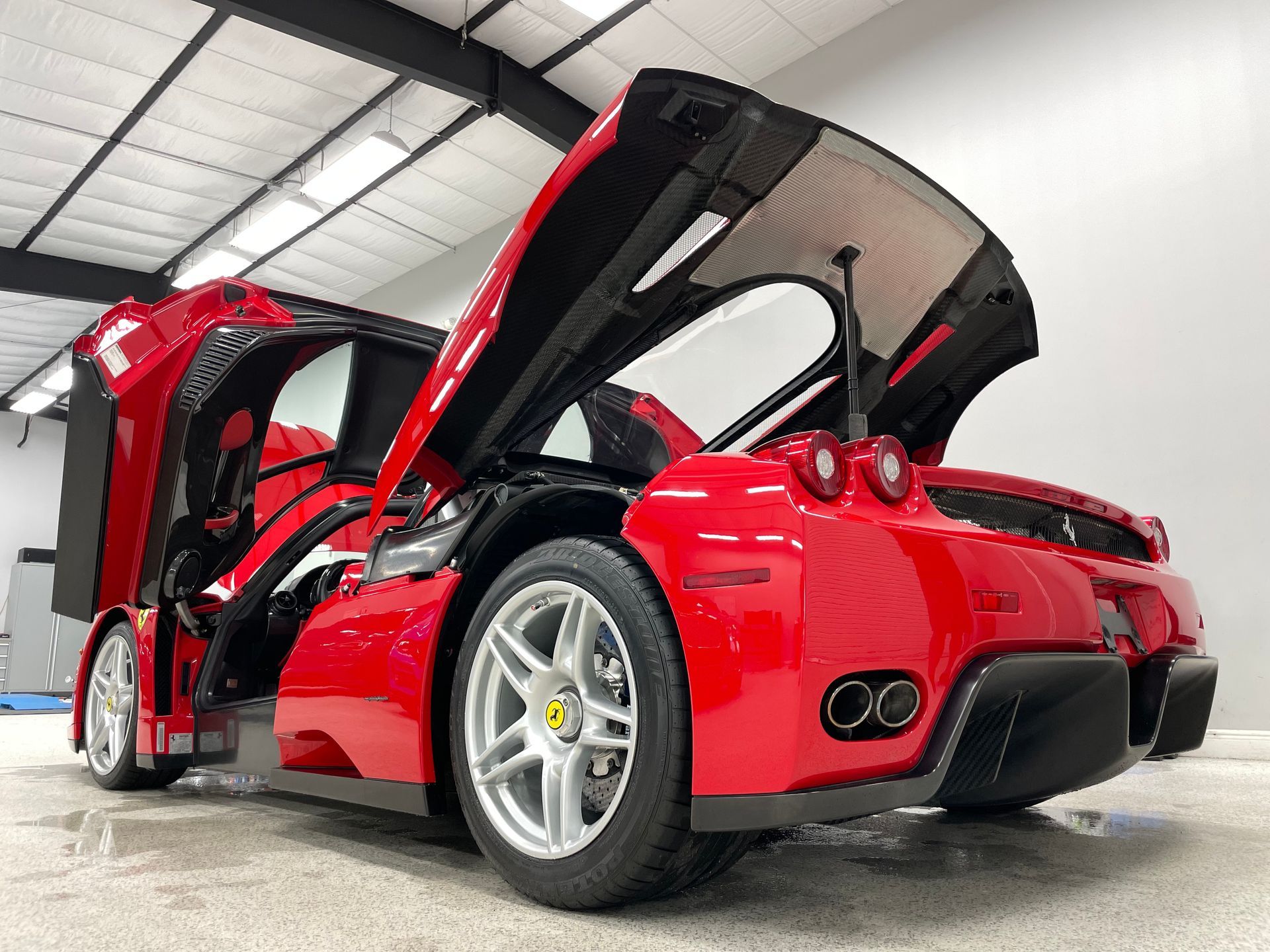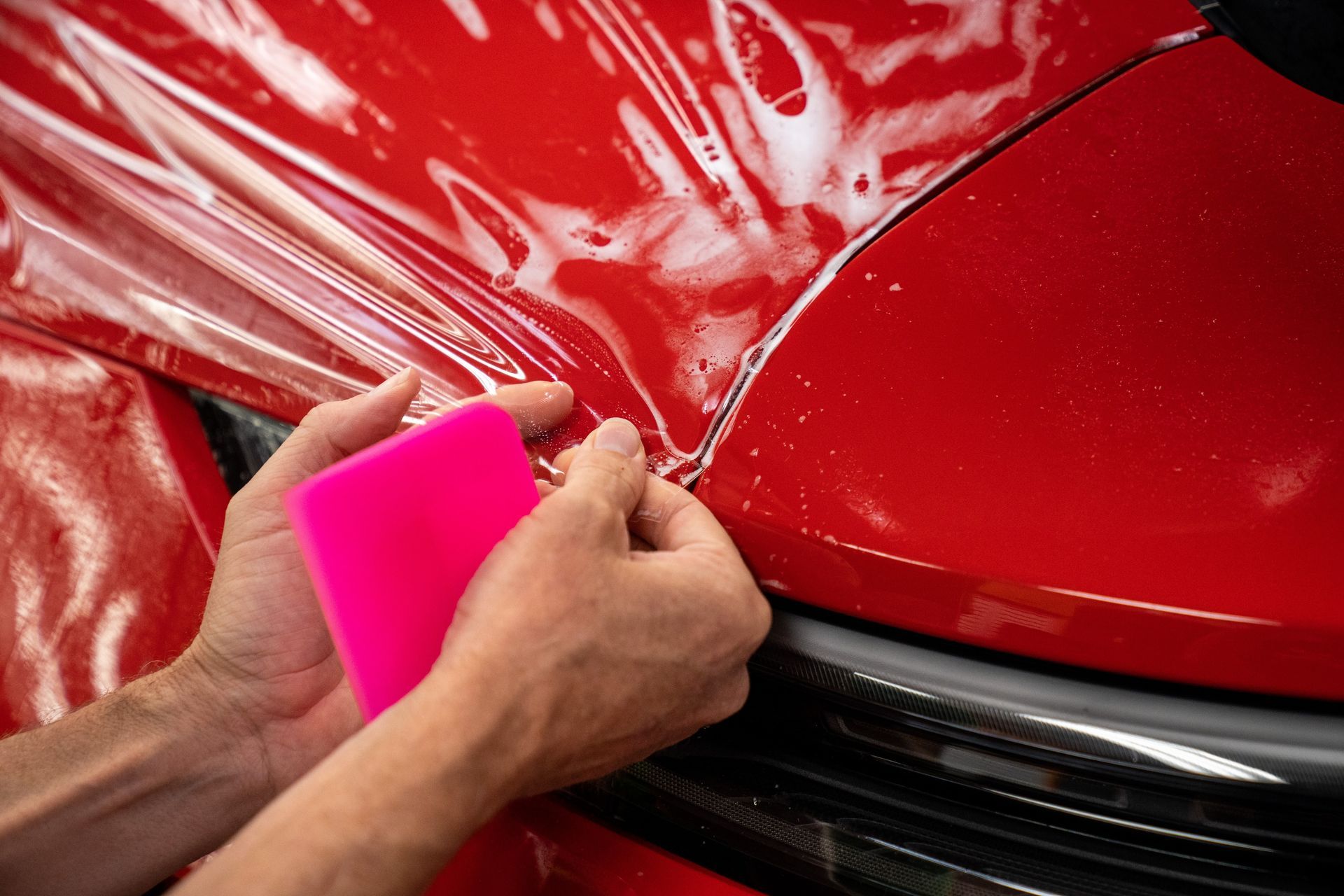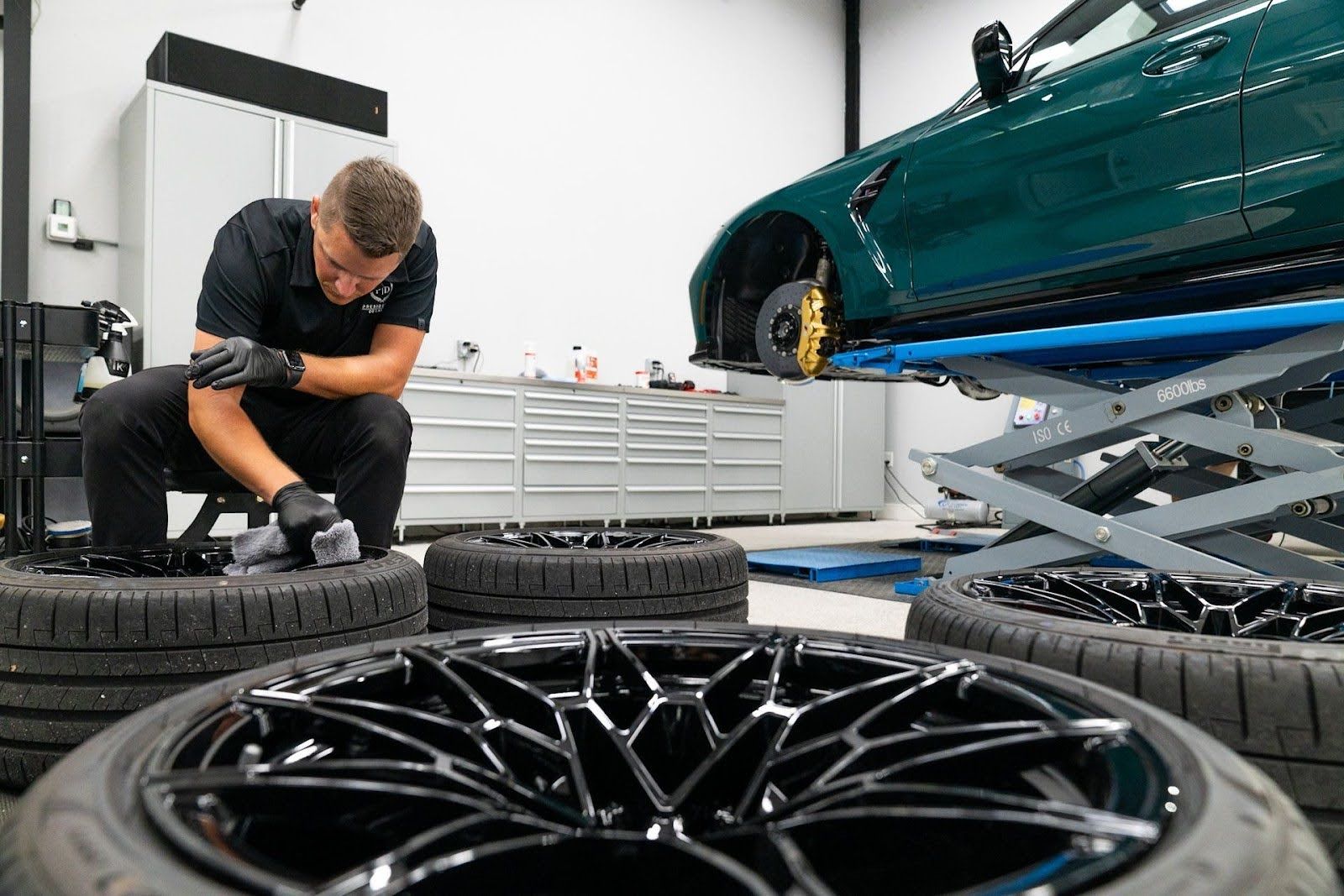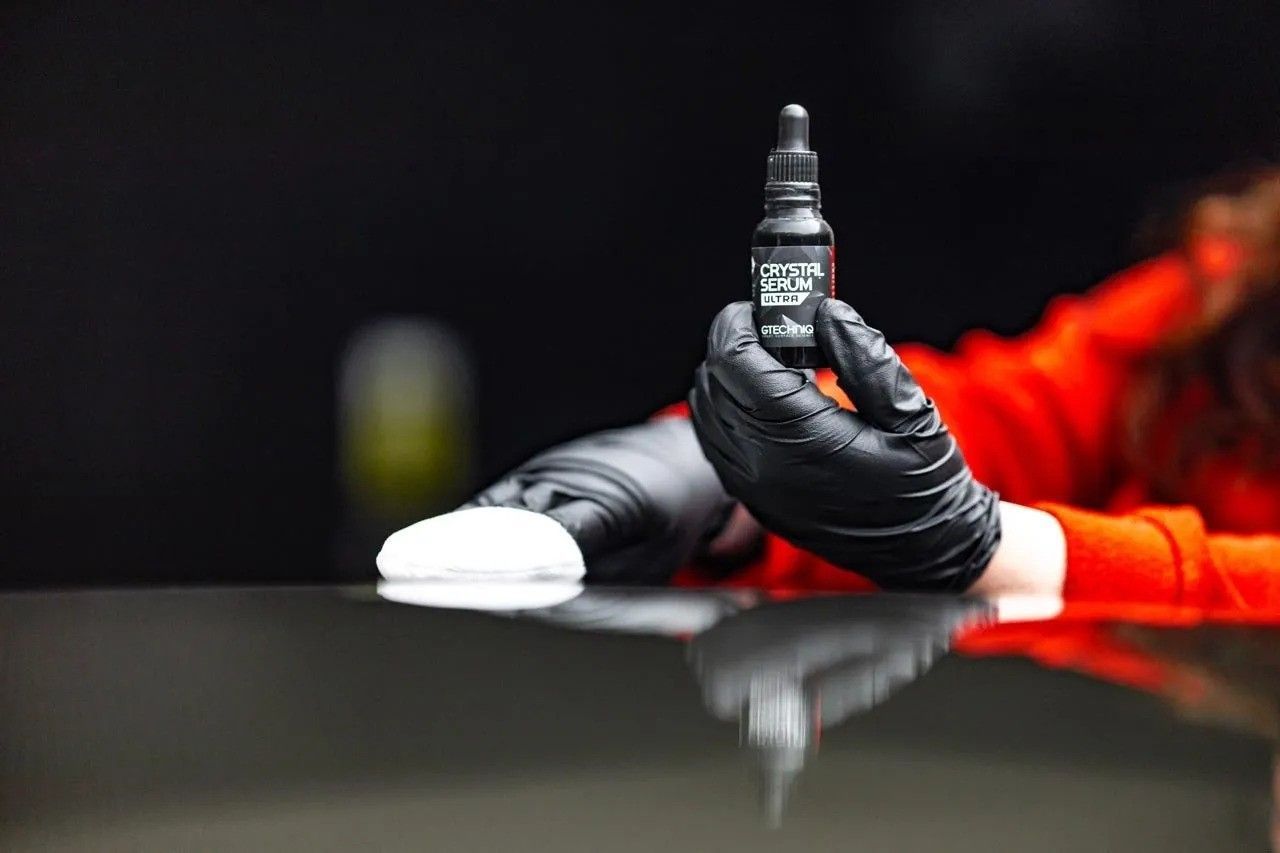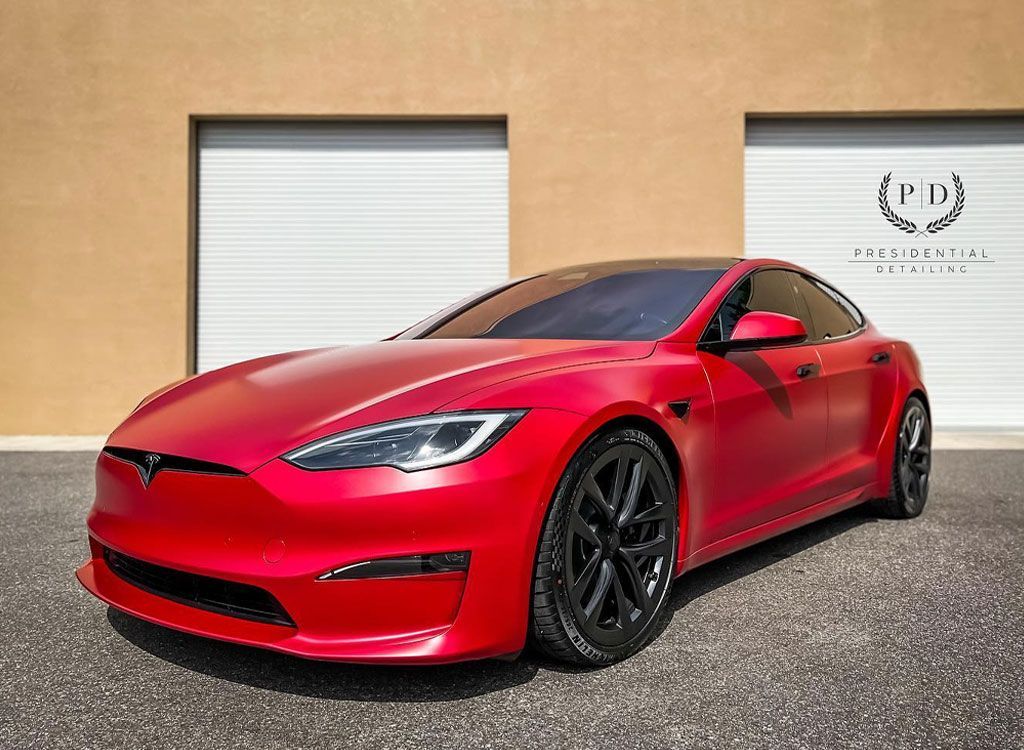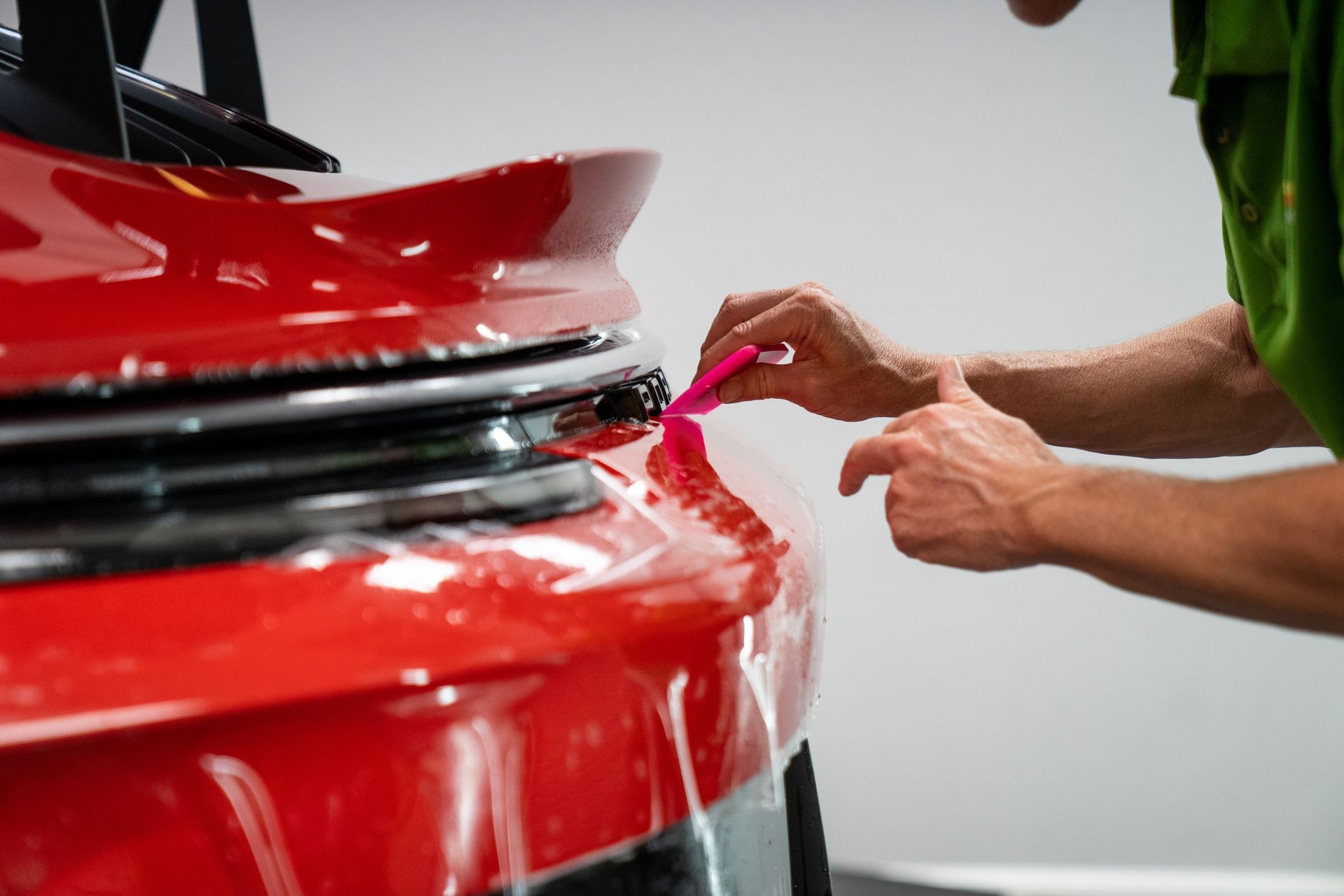Why Ceramic Coating is a Game Changer in Clearwater, FL: Benefits and Longevity
CALL (813) 723-9679
GET A FREE ESTIMATECeramic coating has transformed vehicle care in Clearwater, Florida. It works as a protective suit for your car, bonding with the factory paint to create a strong guard against harsh weather and sun damage. Imagine it like a shield, preventing dirt, water spots, and bird droppings from sticking to your glossy paintwork. And if you thought this magic faded fast, you're mistaken. The shine lasts more than you think. Let's dive further into how it works.
Ceramic coating provides exceptional protection against the harsh sun, salt air, and humidity in Clearwater, FL. Its hydrophobic properties also make it easier to maintain the beauty of your vehicle in this coastal environment.
Unveiling Ceramic Coating
A ceramic coating is liquid armor that, when meticulously applied to your vehicle’s exterior, chemically bonds with the factory paint surface. This isn't just another layer; it's a durable shield that can stand up against the toughest environmental foes and harmful UV rays. The beauty of ceramic coating lies in how it elevates both the gloss and the resilience of the factory paint on your car. The coating wraps your vehicle in a protective layer, locking out contaminants like dirt, road salt, and bird droppings, all while maintaining exceptional clarity and depth. This defense mechanism also works wonders against those pesky UV rays. It prevents your car's paint from fading or oxidizing, keeping its color as lustrous as ever.
Now, let's take a closer look at the application process. Before applying ceramic coating, it's crucial to ensure that the vehicle's surface is thoroughly cleaned and decontaminated. Any residual particles or impurities left on the paint surface could compromise the bonding process between the ceramic coating and the paint. Imagine trying to lay a strong adhesive on top of a dusty or oily surface—it simply won't stick properly. The same reasoning applies to ceramic coating. Therefore, a meticulous preparation procedure such as thorough washing, claying, and possibly even polishing is necessary before applying the ceramic coat. Once the surface is squeaky clean, applying the ceramic coating involves careful handwork to ensure even and full coverage across every surface of the vehicle. If done right, this process results in a brilliant shine that enhances the visual appeal of your car while offering protection at the same time.
Upsides of Ceramic Coating
So, you're considering ceramic coating your vehicle, and you're probably wondering, "What's in it for me?" Well, I'm here to tell you that the perks are vast and certainly worthy of your consideration. Let's unravel the upsides of using ceramic coating for your vehicle.
- Enhanced Protection: The ceramic coating provides an outstanding shield for your vehicle’s paintwork. This protective layer acts as a barrier against various contaminants that can cause damage over time. Whether it's bird droppings, tree sap, or harmful UV rays from the relentless Florida sun, ceramic coating serves as a formidable defense, preventing these elements from causing fading and deterioration. With this added protection, your car's paint job will maintain its shine and vibrancy for much longer.
- Low Maintenance: A notable advantage of ceramic coating is its hydrophobic nature, meaning it repels water and prevents grime from bonding to the surface. This makes washing your car a breeze, as dirt and dust have a tougher time sticking to the ultra-smooth surface. With less frequent washing required, you'll enjoy a cleaner and shinier vehicle for longer periods of time.
- Long-Lasting Shine: Unlike traditional waxes or paint sealants, ceramic coatings offer a long-term solution for maintaining your vehicle's glossy appearance. This advanced protective layer can endure for years, keeping your car looking as good as new with minimum maintenance. Imagine the satisfaction of driving around Clearwater with a car that maintains its eye-catching shine year after year without regular reapplications or extensive upkeep requirements.
In essence, the benefits of ceramic coating offer a compelling case for protecting your investment by prolonging the life and appearance of your vehicle. With enhanced protection against contaminants, low maintenance requirements, and a long-lasting shine, it's no wonder that many car owners in Clearwater are turning to ceramic coatings to keep their vehicles looking pristine for years to come.
Clearwater's Climate and Ceramic Coating
Clearwater, Florida, is renowned for its picturesque beaches and consistently warm, humid weather. While these conditions are perfect for beachgoers, they pose unique challenges for vehicle owners in the area. The combination of high humidity and intense sun exposure can take a toll on car paint over time. This is where ceramic coating shines as a protective shield. The UV resistance provided by the ceramic coating is particularly crucial in an area like Clearwater, where the sun's rays beat down year-round; it not only prevents paint from fading but also shields the vehicle's surface from damage caused by prolonged sun exposure. It's like a shield that keeps your car looking new, even under the relentless Florida sun.
Clearwater's proximity to the coast means vehicles are exposed to salt in the air, which can lead to accelerated rust and corrosion—two problems that no car owner wants to face. Ceramic coating acts as a barrier against the corrosive effects of salt, preserving the integrity of the vehicle's exterior. It's as if your car is suited up with armor against the salty sea breeze, ensuring longevity and protection. Without a ceramic coating, a car in Clearwater might start to exhibit signs of wear and tear sooner than expected due to the harsh environmental factors. Paint fading, rust formation, and corrosion could become pressing issues, resulting in costly repairs or premature deterioration of the vehicle. However, with the ceramic coating acting as a reliable shield against these elements, car owners can enjoy greater peace of mind knowing that their investment is well protected.
In essence, ceramic coating offers a layer of defense designed specifically to combat Clearwater's climate challenges. Its ability to mitigate the effects of high humidity, intense sun exposure, and salt in the air makes it an invaluable asset for maintaining the appearance and structural integrity of vehicles in this coastal paradise.
Durability and Longevity of Ceramic Coating
When it comes to ceramic coating, one word stands out above all else: durability. This protective layer packs a solid punch when it comes to standing up against the elements—namely the harsh sun, salt, and humidity that are synonymous with the Clearwater area. So, why is durability so important in this context? Let's break it down: Clearwater's climate is known for its hot, humid summers, which can take a toll on your vehicle's exterior. The UV rays from the sun can cause paint to fade, while the constant exposure to salt from the nearby coast can contribute to corrosion and degradation of the paintwork. This is where ceramic coating truly shines. Its robust composition acts as a shield against these elements, offering your vehicle unparalleled protection that traditional waxes or sealants simply can't match.
But let's talk numbers. Ceramic coatings are renowned for their impressive lifespan—a well-applied and properly maintained ceramic coating can last anywhere between 2 and 5 years, and in some cases, even longer. This longevity sets it above standard methods of protection. It offers vehicle owners the peace of mind that their prized possessions will remain gleaming and pristine for an extended period of time. Imagine applying a regular wax or sealant every few months to maintain your vehicle's shine. It's not just time-consuming but also adds up in terms of costs over the years. In contrast, a single application of ceramic coating eliminates these repetitive procedures while delivering superior, long-lasting results.
So, what sets ceramic coatings apart in terms of longevity? It all comes down to its unique chemical composition; ceramic coatings form a strong bond with the clear coat and underlying paint. This creates a durable layer that resists environmental contaminants, UV damage, oxidation, and chemical etching. In essence, the longevity and durability offered by ceramic coatings make them an ideal choice for vehicle owners in Clearwater and similar coastal areas, providing unparalleled protection against the elements while significantly reducing maintenance and upkeep costs over time.
Ceramic Coating and Cost Efficiency
It's true that the initial investment for ceramic coating is higher than for traditional waxing. However, when you look at the bigger picture, the long-term benefits significantly outweigh the upfront cost.
Let's break it down. Traditional waxing might seem cheaper initially, but the costs can add up over time as it requires frequent reapplication. With ceramic coating, there is no need for regular reapplication, making it a more cost-effective solution in the long run. With traditional waxes, you may have to reapply every few months, which not only incurs additional material costs but also demands your time and effort. On the other hand, ceramic coatings are known for their durability, lasting for years without needing frequent touch-ups. This means fewer visits to the auto detailing shop and more savings in the long term.
Additionally, ceramic coatings have lower maintenance requirements compared to traditional waxing. This means you don't have to spend as much time and money on cleaning and maintenance products. So, while ceramic coating may require a greater investment at the outset, its long-term cost-efficiency, due to its extended lifespan and reduced maintenance needs, makes it a wise choice for protecting your vehicle's finish.
Professional Ceramic Coating Service in Clearwater, FL
Transform the way you care for your vehicle with Presidential Automotive Detailing, the leading provider of
professional ceramic coating services in Clearwater, FL. Our skilled team is committed to elevating your car's aesthetic appeal while ensuring long-lasting protection against the unique challenges of Clearwater's environment. Experience the pinnacle of automotive care as we apply precision-engineered ceramic coatings that not only enhance your vehicle's shine but also act as an impenetrable shield against UV rays, contaminants, and harsh weather conditions. Trust in our expertise to deliver unparalleled results, providing your car with a brilliant finish that stands the test of time. Elevate your driving experience by choosing Presidential Automotive Detailing for a ceramic coating service that goes beyond expectations. Schedule your appointment now to give your vehicle the premium protection it deserves and rediscover the joy of driving in style!

